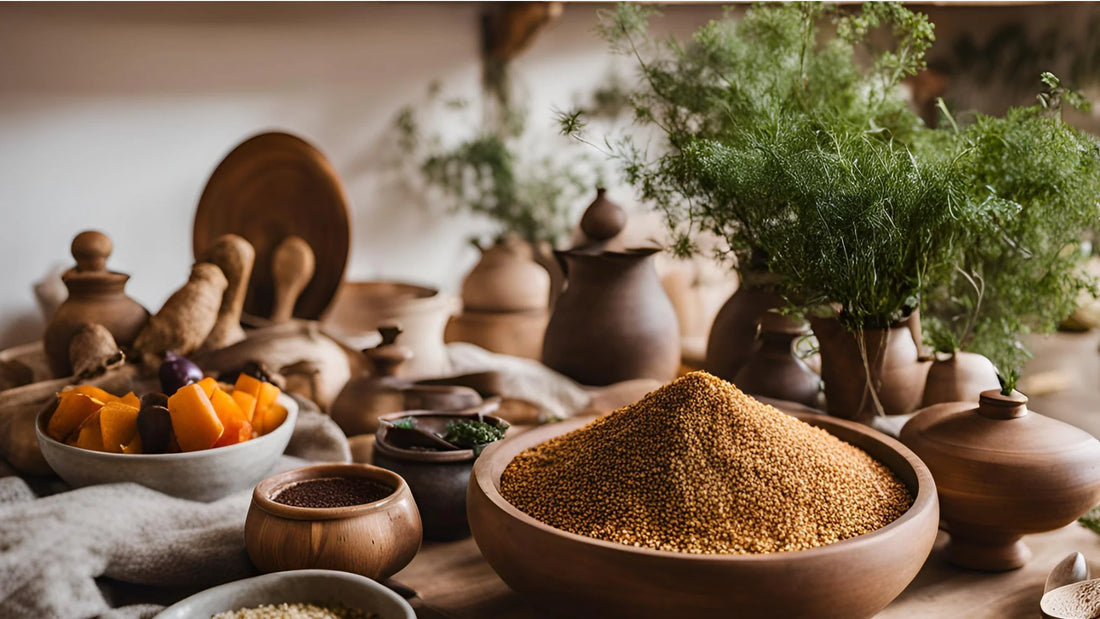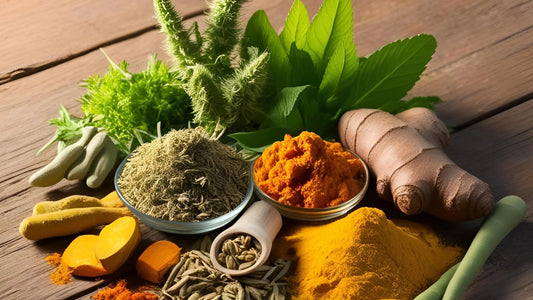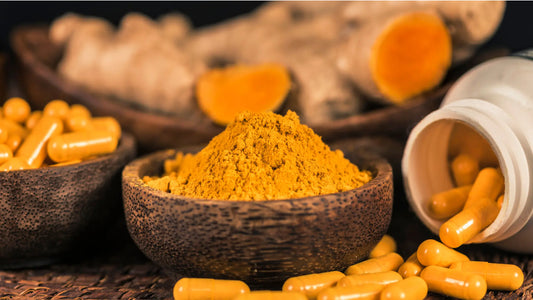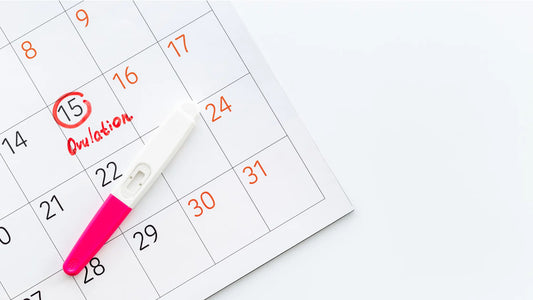
Dietary Solutions: Foods and Nutrients for Balancing Vata Dosha
Ayurveda, an ancient medicinal system originating from India, revolves around the belief that maintaining a delicate balance among the mind, body, and spirit is essential for overall health and well-being. This traditional approach recognizes three doshas – Vata, Pitta, and Kapha – which are combinations of the five elements of nature: earth, water, fire, air, and space. Understanding our dosha composition helps us align ourselves with nature and live in harmony with our inherent constitution. Unlike conventional medicine (Allopathy), Ayurveda places a primary focus on the individual rather than just the condition. Its treatments are responsive to the unique body system of each person. A significant distinction lies in the fact that Ayurveda doesn't merely suppress symptoms but also targets the underlying causes responsible for the condition. This comprehensive approach aims to eliminate the root of the illness, promoting lasting healing. It's important to note that Ayurvedic treatments may take more time to demonstrate efficacy compared to Allopathy, which might provide a quick sense of relief from symptoms but often fails to address the core issue. Ayurveda's strength lies in its holistic approach, offering a deeper understanding of the interconnectedness between human beings and nature, fostering true healing and well-being. In this blog post, we will discuss the characteristics of Vata dosha, the importance of dietary solutions for Vata balance, and how to explore Ayurvedic principles for optimal health.
Understanding Vata Dosha Imbalance
A. Overview of Vata dosha and its role in the body
Vata dosha emerges from the combination of air and space elements, embodying various qualities such as lightness, mobility, coolness, dryness, irregularity, roughness, and clarity, which are characteristic of air and space. This dynamic and creative energy is responsible for facilitating movement and communication throughout the body, akin to currents coursing through the system. According to Ayurvedic medicine, Vata is closely linked to the nervous system and plays a vital role in regulating essential bodily functions like breathing, blinking, and circulation. Ayurveda states that individuals with a dominant Vata constitution tend to be energetic, imaginative, and adaptable. They might exhibit characteristics such as having a lean or moderate body weight, dry skin, and fine hair.
B. Signs and symptoms of Vata dosha imbalance
When the Vata dosha becomes imbalanced, a range of health issues may arise, encompassing constipation, dry skin, insomnia, and anxiety. The indications and manifestations of an imbalanced Vata dosha can be classified as follows:
Physical issues:
- Skin, hair, and lips may become dry.
- Constipation might occur.
- Bloating and gas can manifest.
- Muscle cramps may arise.
- A feeling of restlessness might be experienced.
- Insomnia & Dizziness can be encountered.
Mental/Emotional issues:
- Anxiety & fear may be felt.
- Nervousness might prevail.
- Irritability may be heightened.
- Indecisiveness can become apparent.
- Thoughts may become scattered.
- A sensation of feeling spaced-out could be present.
C. Factors that can contribute to Vata imbalance
As per Ayurveda, several factors can contribute to an imbalance in Vata. Some common causes are as follows:
- Irregular eating habits: Eating at odd times and at different times every day, increase the mobile and irregular qualities of Vata dosha.
- Consuming light, dry, and cold foods: Since Vata dosha embodies these qualities, eating foods with similar characteristics can aggravate Vata.
- Excessive exposure to technology: Vata dosha is closely linked to the nervous system, and Vata-types often have sensitive nervous systems. Hence, it's vital for Vata-types to be cautious of overexposure to technology.
- Excessive Traveling: Mobility is characteristic of Vata dosha. Therefore, the movement involved with travel, as well as any disruption in eating and sleeping habits, aggravates Vata dosha.
- Irregular sleep habits: Vata-types need the most sleep of all three doshas. Similarly to eating at irregular times, going to bed and awakening at odd hours is sure to vitiate Vata dosha.
Balancing Vata Dosha through Diet
Above, numerous issues were mentioned that can arise when Vata dosha becomes imbalanced, such as constipation, dry skin, insomnia, and anxiety. The good news is that there are several dietary practices that can assist in balancing Vata dosha symptoms and fostering overall health and well-being.
i. Foods to pacify and balance Vata dosha
A. Warm and cooked foods
Vata dosha is associated with cold and dry elements, so it is important to eat foods that are warm and cooked. This will help to balance the Vata qualities of lightness and dryness.
B. Healthy fats and oils
Most oils are beneficial for Vata, provided they are high-quality oils. Sesame oil, almond oil, coconut oil, olive oil, and ghee are among the best choices. These oils are warm, heavy, and lubricating, which helps to counteract the light, dry, and cold qualities of Vata dosha.
C. Nourishing and grounding foods
Foods that are nourishing and grounding, such as cooked grains, root vegetables, and legumes, can help to stabilize Vata dosha. Incorporating them with the regular diet is among the Vata dosha home remedies.
D. Sweet, sour, and salty tastes
These tastes help to ground Vata, which is associated with the elements of air and space. These tastes are also said to be nourishing and moistening, which can help to counteract the dryness and lightness of Vata.
ii. Foods to minimize or avoid for Vata dosha balance
Having discussed what to add to balance Vata dosha, let's now focus on what needs to be reduced or avoided to maintain Vata balance effectively:
A. Cold and raw foods
Vata is already associated with the qualities of lightness and dryness, and eating these types of foods can further aggravate Vata. To bring in Vata balance, avoid raw vegetables (like lettuce, celery, cucumbers, and carrots), cold treats (like ice cream, smoothies, and cold drinks), and packaged snacks, frozen meals, and fast food.
B. Stimulating and drying foods
Stimulating foods can increase Vata's already restless nature while drying foods can further aggravate Vata's dry qualities. These can also be difficult to digest for those with an imbalance. Spicy foods such as chilli peppers, black pepper, and cayenne pepper, as well as processed dry foods like crackers, chips, and popcorn, should be avoided in particular.
C.Bitter, astringent, and pungent tastes
It is important to avoid bitter, astringent, and pungent tastes as much as possible. Examples for bitter foods are kale, broccoli, Brussels sprouts, grapefruit, and coffee, Rhubarb, pomegranate, cranberries, and prunes are a few examples for Astringent foods while pungent foods for instance include tumeric, cayenne, sage, thyme, cumin, cinnamon and peppercorn.
D. Excessive caffeine and alcohol
For those whose Vata needs balance, it is important to avoid excessive caffeine and alcohol. Limiting your caffeine intake to no more than 200 milligrams per day and avoiding alcohol altogether goes a long way in keeping pacifying Vata.
iii. Key Nutrients for Balancing Vata Dosha
Ayurvedic texts indicate that certain nutrients help to nourish and pacify Vata, promoting overall well-being and harmony. Some essential nutrients to tackle the imbalance of Vata Dosha symptoms include:
A. Importance of proper hydration
One of the ways to balance Vata dosha is to ensure proper hydration. Water helps to regulate body temperature and flush out toxins. A glass of warm water mixed with a teaspoon of ginger powder can be had first thing in the morning on an empty stomach. This will not only balance Vata dosha but also keep you hydrated throughout the day
B. Essential fatty acids
Essential Fatty Acids (EFAs) play a crucial role in balancing Vata dosha. They lubricate tissues, regulate body temperature, and improve mental health. Good sources for Vata balance include avocados, nuts, seeds, oily fish, whole grains, and eggs, providing omega-3 and omega-6 fatty acids.
C. Nourishing and building nutrients (e.g., proteins, carbohydrates)
Balancing Vata dosha is facilitated by nourishing and building nutrients that provide the body with essential energy and support. Proteins are vital for tissue repair and muscle strength, while carbohydrates serve as the main energy source and maintain blood sugar levels. Opt for protein-rich foods like eggs, beans, and lentils, and choose complex carbohydrates such as brown rice, quinoa, oats, and sweet potatoes for an overall positive impact.
D. Vitamins and minerals for Vata balance
Vitamins support various bodily functions, and minerals contribute to strong bones, regulate blood pressure, and maintain heart health. Including these nutrients in the diet ensures proper functioning and stability, promoting overall well-being and harmonizing Vata dosha.
E. Herbal supplements and Ayurvedic formulations
Ayurveda suggests various herbal supplements and Ayurvedic formulations to restore Vata dosha balance. Effective herbs for Vata treatment include ashwagandha, ginger, kapikacchu, dashamula, cardamom, gokshura, brahmi/gotu kola, shankhapushpi, and haritaki. These herbs infuse grounding, nourishing, stabilizing, and rejuvenating qualities, promoting Vata balance through their heavy, warm, and oily attributes. Ayurvedic formulations like Triphala aid digestion, while Dashmool helps with relaxation and are often prescribed by certified practitioners as harmonizing supplements for Vata Dosha treatment. These natural remedies can effectively harmonize Vata dosha and promote overall well-being when used under the guidance of an Ayurvedic practitioner.
iv. Lifestyle Practices to Support Vata Dosha Balance
Prioritising a slower, grounded approach and establishing a routine with stability is essential for harmonizing the imbalance of Vata Dosha symptoms. Allocate time for rest, savour moments of sweetness, embrace deep nourishment, and find meaning in your activities. Below are easy to follow recommendations on how to balance Vata :
A. Daily routine recommendations
Waking up at the same time each day: Aim to wake up early by 6:30 am. each day. This will help you develop a good routine and ensure you get abundant, restful sleep.
Regular Exercise: Engage in 30 minutes of moderate-intensity exercise each day, such as walking, yoga, or tai chi, which suit Vata dosha.
Healthy Eating at intervals: Establish a regular meal schedule to support digestion and overall well-being. For balanced Vata dosha, adopt good eating habits such as favouring warm, cooked meals, choosing nourishing and grounding foods, and avoiding raw, cold, and processed foods.
Sleep & Relaxation: Different relaxation techniques work differently for each individual. Experimenting with various practices like yoga, meditation, deep breathing, mindfulness, or nature walks allows one to find what resonates best with their unique needs and preferences for relaxation and stress reduction. Aim for 7-8 hours of nightly sleep; maintain a regular sleep schedule and avoid caffeine and alcohol before bedtime if sleep is challenging.
B. Practice of Yoga
A balance of Vata dosha symptoms through yoga, emphasize grounding poses to connect the body to the earth, avoid strenuous exercise to prevent aggravation, and practice in a warm, comfortable environment to counteract Vata's cold and dry tendencies. Cat-Cow Pose (Marjaryasana), Sun Salutations (Surya Namaskar), Triangle Pose (Trikonasana), Warrior Pose (Virabhadrasana I), and Corpse Pose (Savasana) are a few beneficial Asanas. Practice these yoga poses under the guidance of a certified instructor for maximum efficacy, proper alignment and safety.
C. Pranayama & meditation
Pranayama and meditation are powerful techniques perfected over the millennia for balancing Vata dosha. Ujjayi Pranayama warms the body, Kapalbhati Pranayama cleanses, and Nadishodhana Pranayama balances energy channels. Vipassana and Transcendental Meditation develop insight and quiet the mind, respectively. However, it is most essential to practice under a certified instructor for proper guidance and benefit from Pranayama & meditation to relax and focus. Follow general principles, such as a calm environment, regularity, and patience during the practice for Vata balance.
Conclusion
A. Recap of Vata dosha and its characteristics
In Ayurveda, an ancient Indian healing science, Vata dosha is one of the three life energies, formed by the combination of air and space elements. It governs movement and communication in the body, being a fundamental force that defines an individual's constitution alongside Pitta and Kapha doshas, influenced by the interplay of five elements: space, water, earth, fire, and air.
B. Importance of dietary solutions for Vata balance
Dietary solutions play a crucial role in balancing Vata dosha. A Vata-pacifying diet consists of freshly cooked, whole foods that are soft or mushy in texture, rich in protein and fat, seasoned with a variety of spices, and served warm or hot. These foods help to calm Vata’s light and dry qualities by lubricating and nourishing the tissues, preserving moisture, and maintaining warmth, all while supporting optimal digestion and elimination.
C. Nurturing Holistic Wellbeing: Embracing Ayurvedic Principles for Optimal Health
Ayurvedic principles offer a potent path towards optimal health and well-being. Through comprehending your individual constitution and harmonizing doshas with dietary choices, lifestyle practices, herbal supplements, and natural remedies, you can effectively enhance overall health and achieve balance in mind, body, and spirit. By embracing these time-tested principles, you can cultivate a harmonious and balanced life, unlocking your body's innate healing potential for lasting well-being and vitality.
D. Key Takeaways and Valuable Resources for Continued Learning
Ayurveda promotes balance through personalized dietary choices, herbs, and spices, while also emphasizing activities like yoga and meditation. Individualized recommendations ensure unique approaches to achieve harmony and healthy digestion, tailored to each person's specific needs and constitution. We hope this information has been helpful.
FAQs
1.What is Ayurveda?
Ayurveda is an ancient medicinal system originating from India that focuses on maintaining balance among the mind, body, and spirit for overall health and well-being. It recognizes three doshas (Vata, Pitta, and Kapha) that are combinations of the five elements of nature: earth, water, fire, air, and space.
2. What is Vata dosha and its role in the body?
Vata dosha is formed from the elements of air and space. It governs movement and communication in the body, regulating bodily functions such as breathing, blinking, and circulation. Vata is associated with qualities like lightness, mobility, coolness, dryness, irregularity, roughness, and clarity.
3.What are the signs of Vata dosha imbalance?
Signs of Vata dosha imbalance include dry skin, constipation, bloating, restlessness, insomnia, anxiety, and scattered thoughts, among others.
4. How can I balance Vata dosha through diet?
To balance Vata dosha, focus on warm and cooked foods, healthy fats and oils, nourishing and grounding foods, and sweet, sour, and salty tastes. Minimize or avoid cold and raw foods, stimulating and drying foods, and bitter, astringent, and pungent tastes.



